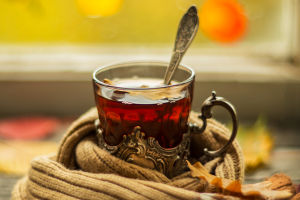Flowers play an essential role in wedding celebrations, going beyond mere decoration. With their fragrance, colors, and symbolism, they tell a story.
Flowers are not just a decorative element—they embody the personalities of the couple, reflecting their preferences and individual style. From the bridal bouquet to table centerpieces, flowers will be featured prominently throughout the wedding day.
How to Choose Wedding Flowers?: Three Key Factors
Selecting flowers for a wedding might seem challenging at first, but the process becomes easier when considering a few important factors. First and foremost, there is no such thing as a “right” or “wrong” flower choice. The most important thing is selecting blooms that resonate with the couple’s personality and preferences.
However, there are a few practical aspects to consider. Below are three critical elements to keep in mind while selecting flowers for the wedding day.
1. Seasonal Blooms: Why It Matters
The season in which the wedding is held is crucial when selecting flowers. Choosing blooms that are in season ensures freshness and longevity, as out-of-season flowers are more likely to wilt quickly. Moreover, seasonal flowers are usually more affordable, making them a budget-friendly option without compromising the aesthetic quality of the wedding.
Here are some seasonal ideas for wedding flowers:
- Winter Wedding Flowers: Iris, Narcissus, Camellia, Anemones
- Spring Wedding Flowers: Roses, Lilies of the Valley, Gerbera, Ranunculus, Peonies
- Summer Wedding Flowers: Sunflowers, Magnolia, Gladiolus, Lilies, Freesia
- Autumn Wedding Flowers: Chrysanthemums, Carnations, Asters, Marigolds, Gentians
Choosing flowers that bloom naturally in the wedding season will enhance the visual appeal of the decorations and ensure they stay fresh throughout the day.
2. Budget Considerations
Floral arrangements can take up a significant portion of the wedding budget, so it’s essential to set a budget limit early on. The bridal bouquet alone can cost anywhere from 80€ and up, depending on the type of flowers selected. Traditionally, the bride’s bouquet was provided by her mother-in-law, but today, the couple typically covers the cost of all the floral arrangements, including the bouquet.
While some flowers may be more expensive due to their rarity or complexity, there are ways to create stunning floral displays on a budget. Mixing more affordable flowers with a few luxurious ones can help achieve a balanced and beautiful arrangement. A professional florist or wedding planner can provide valuable assistance in finding cost-effective yet stunning solutions.
3. Determining the Purpose of the Flowers
The purpose of the flowers will help define the quantity and style needed. A list of how the flowers will be used during the wedding can guide the planning process. Keep in mind that the more flowers you choose, the higher the cost.
Possible uses for wedding flowers include:
- Bridal Bouquet: The central floral piece carried by the bride during the ceremony.
- Throwaway Bouquet: A separate, less expensive bouquet used for the bouquet toss after the wedding cake is cut.
- Ceremony Venue: Floral decorations for the altar or ceremony space. This could include floral arrangements on the chairs or pews and at key locations around the venue.
- Reception Venue: Centerpieces for tables, entryway decorations, or floral arches. It’s important to choose flowers that aren’t overly fragrant for centerpieces, as strong scents can be overwhelming during mealtime.
- Car Decorations: Flowers to adorn the vehicle transporting the couple.
- Flower Crowns or Corsages: Small floral arrangements for the bridesmaids or guests of distinction.
Choosing the Perfect Bridal Bouquet
The bridal bouquet is one of the most iconic elements of the wedding day, and selecting the right one depends on both the bride’s personal style and the overall theme of the wedding. The bouquet should complement the bride’s attire and be proportional to her figure. Whether the bride chooses a modern, romantic, or bohemian style, the bouquet should align with the wedding's theme and atmosphere.
For example, rustic, countryside weddings often call for wildflowers or daisies, while more sophisticated celebrations might favor timeless blooms like roses or orchids.
Conclusion: Making the Right Floral Choice
Choosing flowers for a wedding is a deeply personal decision. The right flowers will reflect the couple’s style, personality, and the atmosphere they want to create for their special day. By considering seasonal availability, budget, and the purpose of each floral arrangement, couples can select flowers that enhance the beauty of their wedding and create lasting memories.
With thoughtful planning and professional guidance, the perfect floral arrangements can be a stunning feature of any wedding celebration.


